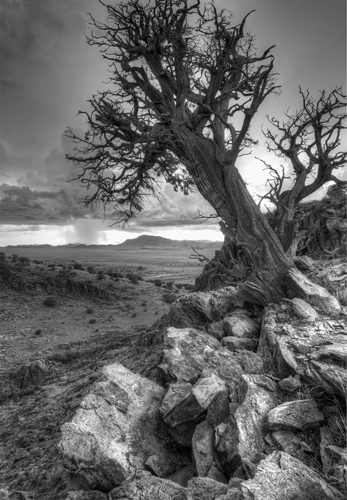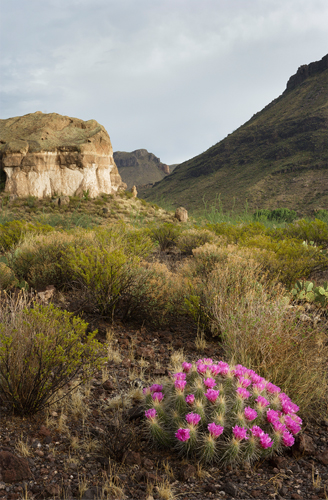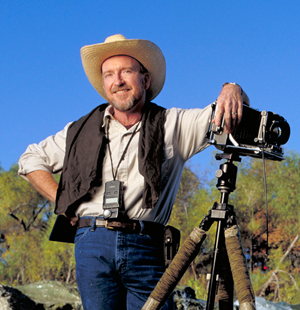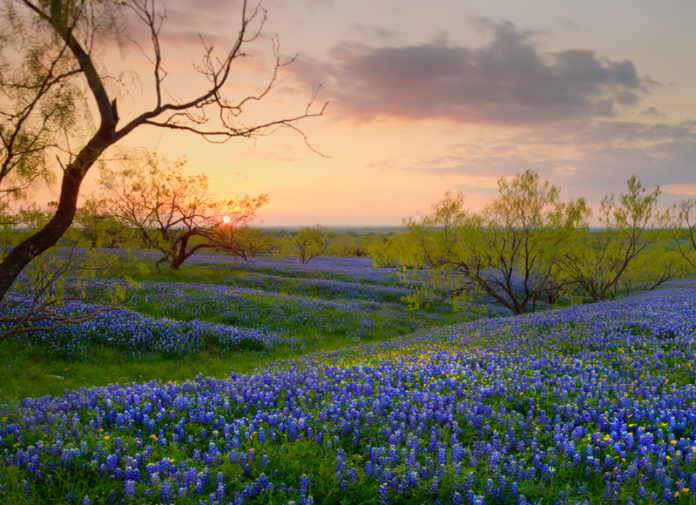Earl Nottingham’s Photographic Odyssey
by Bill Hedrick
With a deep sigh of relief, I watched the campus of East Texas State University fade in my rear view mirror as I drove out of Commerce, Texas, on graduation day in 1978. For the previous four years, my young life had been confined to the small rural town where there was nothing to do but study, party and occasionally fish. I had originally chosen ETSU based upon its reputation as one of the finest universities in the country that offered a Bachelor’s degree in photography. And while it did offer a wide range of photo courses including commercial photography, portraiture and cinematography, I soon found myself disillusioned by having to take a myriad of other classes that seemed to have no relevancy to my becoming a professional photographer.
Classes like marketing, retailing, art history, journalism and especially computer programming seemed to have no bearing at all on my plans in life and each put a major dent in my extracurricular activities; namely the aforementioned partying and fishing. Little did I know (or appreciate) at that time that this little school in the woods had given me the exact tools I needed to survive in the competitive world of photography by providing the fundamental skills required by various genres of photography.
With a degree in my pocket and now freshly engaged to my high school sweetheart, my first career stop was at a commercial studio in Oklahoma City where I enjoyed shooting product and food photography as well as commercial aircraft. My previous darkroom training allowed me to process and print the images I shot. It wasn’t long, however, that the fiancé decided that Oklahoma City was a little too far from mom and dad (I should have seen the handwriting on the wall) so I returned to Central Texas where I began my own freelance photography business and contracted with other studios specializing in commercial photography and location portraiture.
As with many businesses, the first few years were a financial and emotional struggle, resulting in heavy debt as well as a failed marriage to the high school sweetheart. However, over time, thanks to those business practices learned while at ETSU, along with a solid grounding of the technical and artistic requirements of a professional and marketable photograph, the balance sheet gradually turned black and good things started to happen – such as earning my PPA Masters degree and finding the perfect wife.
 The wild wind hit me gradually, starting in the later 1980’s. Although I had developed a good reputation for my portrait and commercial work, there was that little voice in me wanting to try some other type of photography- something out of a studio. To help answer that question, I spent over an hour one evening at the local book store’s magazine rack poring over every magazine that was on display asking myself, “Is this the type of photography I’d like to do?”
The wild wind hit me gradually, starting in the later 1980’s. Although I had developed a good reputation for my portrait and commercial work, there was that little voice in me wanting to try some other type of photography- something out of a studio. To help answer that question, I spent over an hour one evening at the local book store’s magazine rack poring over every magazine that was on display asking myself, “Is this the type of photography I’d like to do?”
Of course, National Geographic was at the top of the list but reality told me I needed to start with practical and obtainable goals. I noticed other travel-related magazines such as Condé Nast Traveler and Southern Living. Wow, who wouldn’t love traveling the world or US and shooting fun and exciting locales? But I noticed, hidden halfway behind those venerable travel publications, were side-by-side issues of Texas Highways and Texas Parks & Wildlife magazines.
It immediately hit me that, as someone who loves to travel the state of Texas, and as an avid outdoorsman, this type of photography, and especially these two publications could offer a realistic path to shooting what I really love. But how to get a foot in the door…?
Call it a wild hair or call it fate, I opened up the Texas Highways magazine and immediately on the masthead I saw the name of the photo editor. Directly below his name was an office phone number which I quickly jotted down on a piece of paper. Early the next morning I called the number and was surprised to immediately get the photo editor on the other end. Since he had no idea who I was, I knew it would be pointless, unprofessional and even rude to just ask for an assignment. Instead, I told him my name and that I would be interested in shooting, on speculation, any holes they may have in any upcoming story.
I was shocked to hear him say that there was a story scheduled on the Frio River that they could use some images on. That was all I needed to hear! For the next week, I photographed the Frio River to the best of my ability and not only did several of my images make it into the magazine, but one turned out to be my first cover shot. My foot was in the door!
 Over the next few years, while maintaining my portrait and commercial work, I began to shoot more stories as a freelance for not only Texas Highways but other publications such as Texas Monthly, Southern Living, National Geographic, Traveler and others, especially Texas Parks & Wildlife.
Over the next few years, while maintaining my portrait and commercial work, I began to shoot more stories as a freelance for not only Texas Highways but other publications such as Texas Monthly, Southern Living, National Geographic, Traveler and others, especially Texas Parks & Wildlife.
Then in 1996, an opening for a staff position as chief photographer for the Texas Parks & Wildlife Department came up. The job entailed not only shooting for the magazine but also for providing images agency-wide for internal and marketing needs. It required not only shooting the iconic landscape, nature and wildlife images that the agency is known for, but also the routine, often mundane shots such as product photos, executive portraits and even the dreaded “grip-n-grins.”
The photo editor for the magazine suggested that I apply for it but humorously added that everyone in Texas who owns a camera had applied for the position – there were hundreds of applications! Needless to say, I won the lottery. But a lot of it was a result of the relationship that had been built up over several years as a freelance provider.
The road from East Texas State University to this mountaintop in the Big Bend where I’m sitting on a boulder and waiting for magic light has provided a wild and exciting ride; full of many unexpected turns and detours. However, just having the opportunity to pursue and execute a beautiful photograph (and I think I speak for most photographers) is what keeps us positive and seems to smooth out and even trivialize many of life’s little issues. I’ve never seen a group of unhappy photographers.
That same road from East Texas has also instilled in me one truth about photography. If you are a good portrait or commercial photographer, you can be a good wildlife or nature photographer. If you are a good wildlife and nature photographer, you can be a great portrait or commercial photographer. The dirty little secret is that all genres of photography share similar common denominators that most professional photographers already instinctively know and practice.
Those denominators include technical basics such as appropriate focus and exposure. Artistic considerations include impactful lighting (either natural or modified), classical composition using such elements as leading lines, rule-of-thirds, color harmony and, above all, that one serendipitous “cherry on top” that we never plan for but can make all the difference between a good photograph or a great one.
In nature photography that “cherry” can be something as simple as a single dewdrop on a leaf or the unpredictable last evening ray of orange sunlight peeking through the clouds. Just as a portrait photographer would be ready to catch that split-second fleeting expression from a subject, so should the outdoor photographer be ready for nature’s own expressions and body language. To paraphrase one of my favorite lines from a movie – “Life (photography) never goes the way you intend it to. What happens instead can be the good stuff.”
 For over 35 years, Earl Nottingham has been telling the story of Texas and much of the American Southwest through his photography and is considered one of Texas’ preeminent photographers. As an accredited Master Photographer, his work has been featured in numerous regional and national publications such as National Geographic, Traveler, Smithsonian Guide to America, Texas Monthly, Texas Highways and Texas Parks & Wildlife magazine. Learn more about him at www.earlnottingham.com.
For over 35 years, Earl Nottingham has been telling the story of Texas and much of the American Southwest through his photography and is considered one of Texas’ preeminent photographers. As an accredited Master Photographer, his work has been featured in numerous regional and national publications such as National Geographic, Traveler, Smithsonian Guide to America, Texas Monthly, Texas Highways and Texas Parks & Wildlife magazine. Learn more about him at www.earlnottingham.com.











